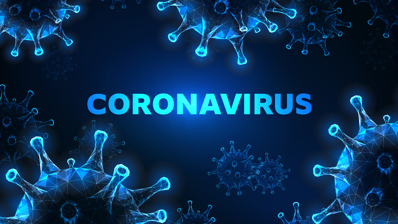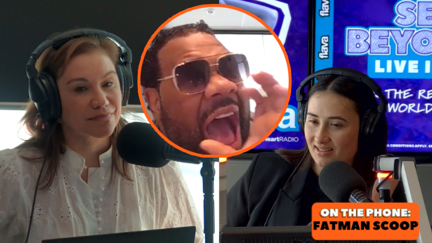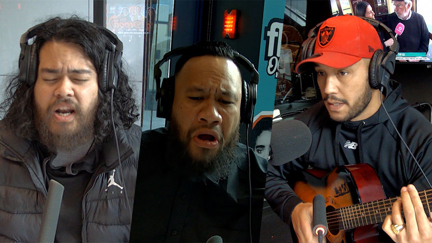Coronavirus - what you need to know: Latest updates and essential info
- Publish date
- Monday, 16 Mar 2020, 1:54PM

IF YOU ARE FEELING UNWELL OR HAVE CONCERNS YOU MIGHT HAVE COVID-19 - contact the Healthline team (for free) on 0800 358 5453
Updated as at 8:00pm, 31/05/2020
The country has 1,504 cases of COVID-19. There were no new cases in the latest announcement.
New Zealand has had 22 deaths caused by COVID-19.
In positive news, almost all cases have recovered. There is now only 1 active case of COVID-19. It is a person in their 50's in Auckland.
There is no one receiving hospital care for COVID-19.
Life under Alert Level 2
- The principle behind Level 2 is to "play it safe".
- Public health measures remain the same if you are sick stay home.
- If you have symptoms get a test.
- Reduce close contact with strangers.
- Physical distancing of one metre outside the home (including on public transport).
- Continuation of high hygiene standards.
Key difference from Level 3
-
You can see friends and family again, you no longer need to stick to your bubble but keep the numbers small.
Business
- Business can restart for staff and customers.
- Good hygiene practises must be in place.
- Have a conversation with your employer about staggered start times, alternative hours or working from home if possible.
- Malls will reopen but with a limited number of people able to enter, similar to supermarkets.
- Hairdressers and beauticians can reopen but must use appropriate PPE gear.
- Cafes, restaurants or bar can reopen but must have no more than 100 people and follow the three 'S's: Seated - every patron must be seated, Separated - social distancing within the venue, Single server - table service only with one person.
- If businesses are unable to do this they will be shut down.
Schooling
- Children are allowed schools and early learning.
- Tertiary learning may also reopen.
- Distance learning will continue if needed.
- Keep children at home even if they are even slightly sick.
Travel
- Border measures remain unchanged from Alert Level 3.
- People are allowed to travel domestically around the country.
- Social distance on public transport and airports must be put in place.
Recreations and sport
- Gyms and swimming pools may reopen.
- Professional sport may resume domestically.
- Museums and markets can also reopen but social distancing must be put in place.
- Both Indoor and Outdoor gatherings are limited to a maximum of 100 people.
Find out more information about Alert Level 2 at covid19.govt.nz.
/media.nzherald.co.nz/webcontent/infographics/3851/ALERTS_OL.jpg)
Essential services are still open at all alert levels.
Prime Minister Jacinda Ardern said physical distancing should always be practised.
She said the Government had done all it could to prevent the spread of Covid-19, and the Government was asking the New Zealand public to do the same.
The measures would hit the economy hard, but they were necessary, she said.
What are the travel restrictions?
New Zealand's borders are closed to everyone but citizens and residents.
New Zealand citizens and permanent residents will be able to return, and that includes the children and partners of citizens and permanent residents.
All travellers will have to quarantine on their arrival in New Zealand.
All cruise ships are banned from New Zealand until June 30. It does not apply to cargo ships. The decision would be reviewed after that date.
For Kiwis already overseas, those needing consular assistance were asked to contact the Ministry of Foreign Affairs.
"This decision will mean New Zealand will have the widest-ranging and toughest border restrictions of any country in the world," Ardern said.
Restrictions also prevent foreign nationals travelling from or transiting through mainland China or Iran from entering New Zealand.
The Government has also issued a stern warning for people with health conditions to reconsider overseas cruises.
People who become sick within a month of travelling overseas are encouraged to seek medical advice and phone Healthline on 0800 358 5453 or a doctor. It is important to mention recent travel history and any known contact with someone with a confirmed case of Covid-19.
What does it mean to self-isolate?
You should avoid situations where you may come in close contact with others (face-to-face contact closer than one metre for more than 15 minutes), such as social gatherings, work, school, child-care/pre-school centres, university, polytechnic and other education providers, faith-based gatherings, aged-care and health-care facilities, prisons, sports gatherings, restaurants and all public gatherings.
If you have been exposed, it may take up to two weeks for symptoms to present.
Ardern said a range of measures to assist those in self-isolation would be announced this week.
Community support to those unable to support themselves would be increased.
A public information campaign will be launched, the Finance Minister will announce a business continuity package and the Health Minister will announce a suite of additional health measures.
Where did coronavirus come from?
It was first reported in Wuhan City, Hubei Province, China. The live animal market, the Huanan Seafood Wholesale Market, is suspected as the original source but has not been confirmed.
What are the symptoms of coronavirus?
The symptoms often start in the back of the throat with a sore throat and a dry cough.
Other symptoms — fever, shortness of breath, body aches, fatigue and sometimes vomiting and diarrhoea — can signal any number of illnesses, from flu to strep to the common cold.
How do you catch it?
The virus is spread through droplets transmitted into the air from coughing or sneezing, which people nearby can take in through their nose, mouth or eyes.
The viral particles in these droplets travel quickly to the back of your nasal passages and to the mucous membranes in the back of your throat, attaching to a particular receptor in cells, beginning there.
What can I do to prevent it?
Good hygiene, regularly washing and thoroughly drying your hands, and other simple steps can help stop the spread, the Ministry of Health says.
These include avoiding close contact with people with cold or flu-like illnesses and covering coughs and sneezes with disposable tissues or clothing.
Washing hands for at least 20 seconds with water and soap and drying them thoroughly, before eating or handling food, after using the toilet, after coughing, sneezing, blowing your nose or wiping children's noses, or after caring for sick people can help prevent spreading the disease.
How do you treat it?
There is no specific treatment for coronavirus, but medical care can treat most of the symptoms.
This could involve prescribing antiviral medication used to treat influenza or antibiotics used to treat bacterial infections.
Researchers in many countries are working on developing a vaccine.
Do face masks help?
The World Health Organisation has endorsed face masks as a precautionary measure to avoid contracting coronavirus.
Colleen Kraft, an infectious disease expert for the Emory University Hospital, said that the masks can be effective in combating the two most common ways of contracting a virus in an interview with the Washington Post.
"The mask not only protects you from droplets. It also protects you from bringing your hand, which may have the virus on it, to your mucus membranes such as your nose and your mouth."
However, the masks are only effective under certain circumstances. If not changed regularly they can become useless, and far less effective when not used with other hygiene precautions.
Meanwhile, infectious diseases expert Dr Siouxsie Wiles told the Herald that culturally in countries like China, people wear masks not to prevent infection, but when they have a cold – to stop spreading it.
"It's not very good at blocking viruses coming in. People don't wear them properly, they don't make a good fit around [your face]. If you have a gap, you're breathing stuff in.
"There are other masks that we would use in the lab for when we're doing dangerous stuff and they are very different."
What is a pandemic?
Rebecca S.B. Fischer, an assistant professor of epidemiology at Texas A&M University says three important words are being mixed up: outbreak, epidemic and pandemic.
Simply put, the difference between these three scenarios of disease spread is a matter of scale.
An outbreak is small, but unusual. An epidemic is bigger and spreading. A pandemic is international and out of control.
How should I explain coronavirus to kids?
Scientist Michelle Dickinson and Prime Minister Jacinda Ardern have released a video aiming to explain the outbreak and how to keep safe in a clear and simple way.
Dickinson said a key message was that most people recovered from the coronavirus and that New Zealand could contain it.
She said that children under 15 appear to be showing immunity to the virus.
The video includes a guide to the virus' symptoms and what to keep an eye out for.
This article was first published on nzherald.co.nz and is republished here with permission.
Take your Radio, Podcasts and Music with you




